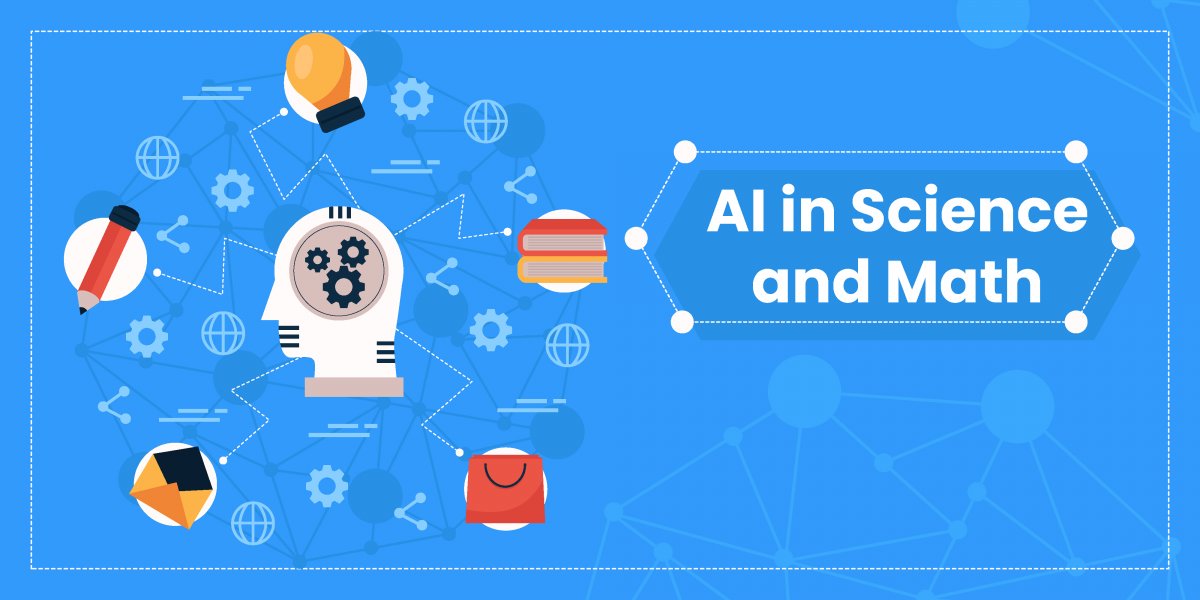Today, AI is employed in practically every field, and the tools given by AI in science and math are no exception. Many of today’s science and mathematics investigations create so much data that no individual or group of people could ever keep up. AI is being unleashed by researchers, most commonly in the way of neural networks that are artificial. With the advancements in artificial intelligence, the implementation of AI in science and math is going to be bigger and more important than ever before.
AI for science drug research and discovery
-
The use of AI for science research and discoveries is one possible area of progress.
-
For example, AI can assist in expediting the development of drugs by evaluating massive volumes of scientific data and uncovering possible drug ideas that human researchers may have overlooked.
-
By studying the structures of various chemical molecules and compounds, forecasting interactions, and modeling effects of drugs in biological contexts, AI can aid in the identification of potential drugs.
Ask questions and get the relevant answers
-
AI in science and math can help students ask questions and get the correct response to them.
-
ChatGPT and Google Bard are the two recent advancements in artificial intelligence in which students can ask answers to specific questions or even ask the AI bot to frame questions to test their knowledge.
-
For example a biology student may ask ‘Define flower’ in scientific terms.
-
Answer by the AI bot could be something like this:
-
A flower is defined as a condensed modified shoot specialized in sexual reproduction in Angiosperm plants.
-
It is crucial for students to understand that whether AI in science or AI in math, students are expected to carry out their own research and not just use AI bots for getting answers.
Summaries and vital points
AI models are great for summarizing, providing bullet points, and conveying vital information.
The math or science students can give the text to be summarized, or they can ask the AI to search the information for them.
For example,
AI in science
Summarize, write all the key points and important structures of polymers in chemistry.
AI in math
Summarize the probability chapter and list of the basic probability formulae.
Data mining and pattern recognition
-
AI can analyze massive volumes of data swiftly and uncover patterns that humans may fail to see right away.
-
This is extremely useful for students, researchers, and scientists in astronomy, genetics, molecular biology, computational geometry, and meteorology.
-
AI in math can recognize patterns in vast datasets, which is very helpful in numerical theory research.
-
It can aid mathematicians in their study of trends in mathematical sequences.
Problem solving automation
-
AI can assist with the solution of mathematical problems that need significant computations.
-
It can save precious hours and efforts of students by offering step-by-step solutions.
Virtual labs and simulations
-
AI-powered models and simulated labs may give students hands-on experience while also assisting them in visualizing intricate topics.
-
Students may use these tools to experiment with various scenarios and understand how science and math principles relate to real-life situations.
Bridging the gap between various academic disciplines
-
AI can help students interact and exchange information more efficiently by bridging the divide between various scientific domains and disciplines.
-
AI algorithms, for example, may be used to combine data from many technical domains such as physics, chemistry, biology, and mathematics in order to uncover new research possibilities and prospective areas of collaboration.
-
AI can assist to expedite the pace of technological breakthroughs by breaking down boundaries between academic disciplines.
Limitations of using AI in science and math
AI models do not have up-to-date information
-
AI models undergo training on data that only runs up to a specific date, which means that any novel findings and advances that occur beyond that date are completely undiscovered to the AI.
-
For example, ChatGPT’s knowledge is confined to September 2021.
-
This means that it can answer questions and has information about the events that have occurred only up to September 2021.
AI may give unnecessary (irrelevant) information
-
The use of AI in science and math may provide correct information.
-
However, many times, the information may be just too much or irrelevant.
-
For example, if a student of Grade 8 searches for information about DNA (Deoxyribonucleic Acid), the AI bot may provide excess, irrelevant information of higher grades.
-
This may make things much more complicated for the student.
AI can give incorrect responses
-
AI tools like ChatGPT will undoubtedly make mistakes because they are continually changing language models.
-
While utilizing them, it is vital to cross-verify the responses generated from reliable sources.
-
The responses may have grammatical, arithmetic, factual, and logical mistakes.
-
It is not always accurate for answering complex questions in specialized areas such as linguistics or mathematics, so keep these kinds of questions simple.
If the recent advancements in artificial intelligence are applied thoughtfully and correctly by researchers, scientists, and students, they can save valuable time and efforts. With the use of AI in science and math, novel paths of knowledge and information can be unlocked. The journey towards learning the so-called difficult subjects of science and math can be made more fun, interactive, and exciting.

